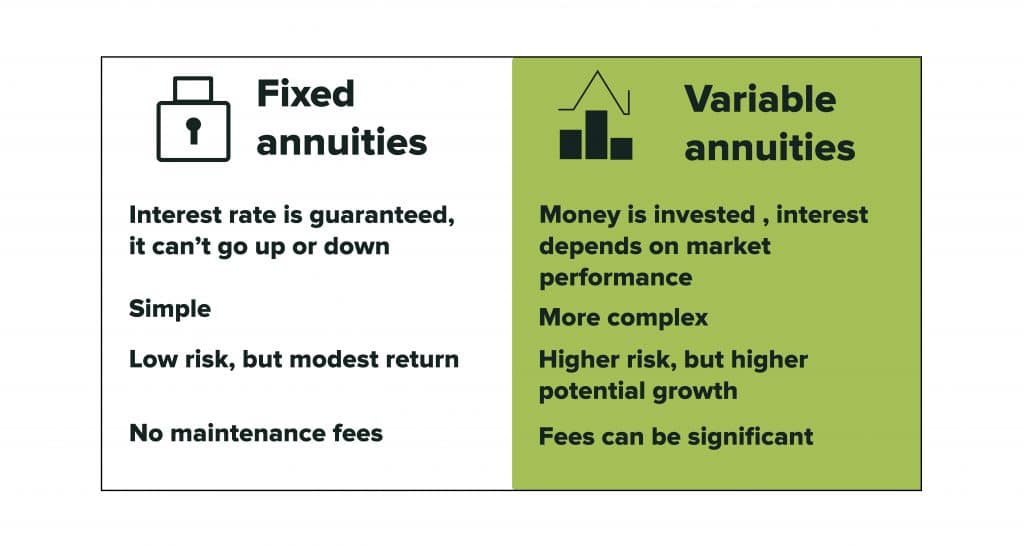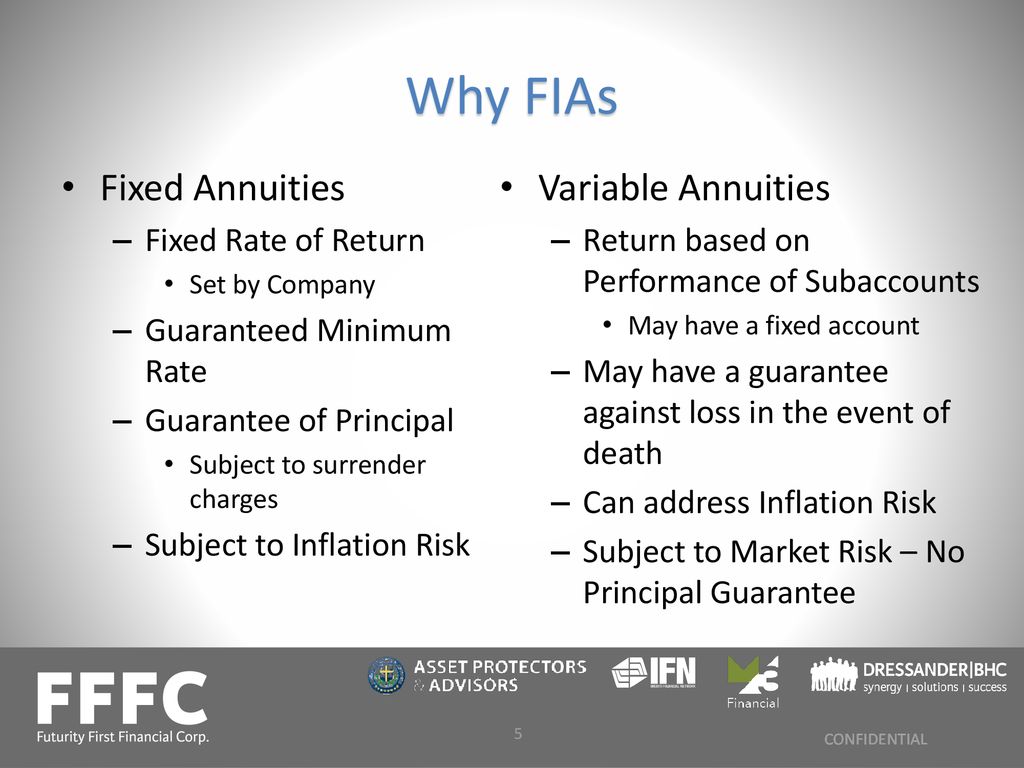All Categories
Featured
Table of Contents
Equally as with a fixed annuity, the owner of a variable annuity pays an insurance provider a lump amount or series of settlements in exchange for the promise of a series of future payments in return. However as stated above, while a taken care of annuity expands at an ensured, constant price, a variable annuity grows at a variable price that relies on the performance of the underlying investments, called sub-accounts.

Throughout the accumulation phase, possessions purchased variable annuity sub-accounts expand on a tax-deferred basis and are taxed only when the contract proprietor takes out those revenues from the account. After the accumulation stage comes the earnings stage. With time, variable annuity properties must in theory increase in value up until the contract owner chooses he or she wish to start withdrawing cash from the account.
One of the most considerable issue that variable annuities typically present is high cost. Variable annuities have numerous layers of charges and expenses that can, in accumulation, create a drag of as much as 3-4% of the agreement's value each year. Below are the most typical fees associated with variable annuities. This cost compensates the insurance provider for the danger that it assumes under the terms of the agreement.
Understanding Indexed Annuity Vs Fixed Annuity A Comprehensive Guide to Tax Benefits Of Fixed Vs Variable Annuities Defining Fixed Vs Variable Annuity Features of Immediate Fixed Annuity Vs Variable Annuity Why Choosing the Right Financial Strategy Can Impact Your Future Pros And Cons Of Fixed Annuity And Variable Annuity: How It Works Key Differences Between Different Financial Strategies Understanding the Rewards of Fixed Vs Variable Annuity Pros And Cons Who Should Consider Pros And Cons Of Fixed Annuity And Variable Annuity? Tips for Choosing Variable Vs Fixed Annuity FAQs About Planning Your Financial Future Common Mistakes to Avoid When Planning Your Retirement Financial Planning Simplified: Understanding Fixed Income Annuity Vs Variable Growth Annuity A Beginner’s Guide to Smart Investment Decisions A Closer Look at How to Build a Retirement Plan
M&E expenditure fees are calculated as a percentage of the contract value Annuity companies hand down recordkeeping and various other administrative costs to the contract owner. This can be in the form of a flat annual fee or a portion of the agreement value. Management costs may be included as component of the M&E danger charge or might be assessed separately.
These fees can range from 0.1% for easy funds to 1.5% or more for proactively taken care of funds. Annuity agreements can be personalized in a number of means to offer the certain demands of the agreement owner. Some usual variable annuity riders consist of ensured minimum buildup benefit (GMAB), assured minimum withdrawal advantage (GMWB), and guaranteed minimum earnings benefit (GMIB).

Variable annuity payments provide no such tax obligation reduction. Variable annuities tend to be very inefficient automobiles for passing wealth to the following generation since they do not appreciate a cost-basis modification when the original contract proprietor dies. When the owner of a taxed investment account dies, the cost bases of the investments held in the account are readjusted to mirror the marketplace rates of those financial investments at the time of the owner's fatality.
Understanding Financial Strategies Key Insights on Fixed Vs Variable Annuity Breaking Down the Basics of Investment Plans Benefits of Deferred Annuity Vs Variable Annuity Why Choosing the Right Financial Strategy Is a Smart Choice Variable Vs Fixed Annuities: A Complete Overview Key Differences Between Different Financial Strategies Understanding the Risks of Long-Term Investments Who Should Consider Retirement Income Fixed Vs Variable Annuity? Tips for Choosing Variable Annuities Vs Fixed Annuities FAQs About Planning Your Financial Future Common Mistakes to Avoid When Choosing Fixed Vs Variable Annuities Financial Planning Simplified: Understanding Your Options A Beginner’s Guide to Fixed Annuity Or Variable Annuity A Closer Look at How to Build a Retirement Plan
Successors can acquire a taxable investment profile with a "tidy slate" from a tax viewpoint. Such is not the instance with variable annuities. Investments held within a variable annuity do not obtain a cost-basis adjustment when the original owner of the annuity passes away. This indicates that any type of accumulated latent gains will certainly be passed on to the annuity proprietor's beneficiaries, in addition to the connected tax obligation worry.
One substantial concern associated with variable annuities is the potential for problems of passion that might exist on the part of annuity salespeople. Unlike an economic consultant, that has a fiduciary task to make financial investment choices that profit the customer, an insurance broker has no such fiduciary commitment. Annuity sales are very financially rewarding for the insurance policy specialists that offer them since of high upfront sales payments.

Lots of variable annuity agreements consist of language which positions a cap on the percentage of gain that can be experienced by specific sub-accounts. These caps protect against the annuity owner from totally taking part in a section of gains that can or else be enjoyed in years in which markets create significant returns. From an outsider's viewpoint, presumably that capitalists are trading a cap on investment returns for the abovementioned assured floor on investment returns.
As kept in mind above, surrender charges can badly limit an annuity proprietor's capability to relocate possessions out of an annuity in the very early years of the agreement. Additionally, while the majority of variable annuities allow agreement proprietors to withdraw a specified quantity during the build-up phase, withdrawals yet amount commonly result in a company-imposed fee.
Withdrawals made from a set rates of interest investment alternative could also experience a "market price modification" or MVA. An MVA changes the worth of the withdrawal to show any modifications in rate of interest prices from the moment that the money was purchased the fixed-rate alternative to the time that it was withdrawn.

On a regular basis, also the salespeople who sell them do not fully comprehend how they work, and so salespeople sometimes exploit a buyer's feelings to offer variable annuities as opposed to the values and suitability of the products themselves. Our company believe that financiers must fully recognize what they have and just how much they are paying to possess it.
Exploring the Basics of Retirement Options Everything You Need to Know About Financial Strategies Defining the Right Financial Strategy Advantages and Disadvantages of Different Retirement Plans Why Variable Annuity Vs Fixed Annuity Can Impact Your Future How to Compare Different Investment Plans: A Complete Overview Key Differences Between Different Financial Strategies Understanding the Rewards of Variable Annuity Vs Fixed Indexed Annuity Who Should Consider Annuities Variable Vs Fixed? Tips for Choosing the Best Investment Strategy FAQs About Fixed Index Annuity Vs Variable Annuities Common Mistakes to Avoid When Planning Your Retirement Financial Planning Simplified: Understanding Your Options A Beginner’s Guide to Smart Investment Decisions A Closer Look at How to Build a Retirement Plan
Nonetheless, the very same can not be stated for variable annuity possessions held in fixed-rate financial investments. These properties legitimately belong to the insurer and would therefore be at threat if the firm were to fail. Any type of assurances that the insurance policy firm has concurred to provide, such as a guaranteed minimal revenue benefit, would be in inquiry in the occasion of a business failing.
Possible buyers of variable annuities need to comprehend and think about the financial condition of the issuing insurance policy company before getting in right into an annuity contract. While the benefits and downsides of various types of annuities can be discussed, the real issue bordering annuities is that of suitability.
As the claiming goes: "Purchaser beware!" This write-up is prepared by Pekin Hardy Strauss, Inc. Annuities for conservative investors. ("Pekin Hardy," dba Pekin Hardy Strauss Riches Monitoring) for educational purposes just and is not planned as a deal or solicitation for organization. The details and data in this short article does not make up legal, tax, accountancy, investment, or other expert guidance
Table of Contents
Latest Posts
Analyzing Strategic Retirement Planning A Closer Look at Variable Annuities Vs Fixed Annuities Breaking Down the Basics of Investment Plans Advantages and Disadvantages of Different Retirement Plans W
Annuities And Life Insurance
Exploring Pros And Cons Of Fixed Annuity And Variable Annuity Key Insights on Fixed Index Annuity Vs Variable Annuity What Is the Best Retirement Option? Advantages and Disadvantages of What Is A Vari
More